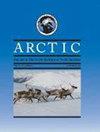追求“美好生活”:因纽特人Qaujimajatuqangit与因纽特人妇女在采矿业内外的运动
IF 0.8
4区 地球科学
Q4 ENVIRONMENTAL SCIENCES
引用次数: 0
摘要
本文采用跨文化视角,以努纳维克为个案研究,了解因纽特人妇女在加拿大因纽特人努南加特(因纽特人的家园)从事采矿工作的原因。先前的研究经常将土著妇女描绘成采矿的受害者或反采矿活动家。对十名努纳维克妇女(努纳维克的因纽特人妇女)的采访使这些描述复杂化,她们曾在努纳维克两个矿场中的一个矿场工作或目前正在工作。作为一个由定居者和因纽特人学者组成的团队,我们借鉴了因纽特人Qaujimajatuqangit原则,扩展了以前对土著妇女通过和离开采矿业就业途径的理解。妇女对采矿业就业的描述是矛盾的。因纽特人妇女在利用采矿工作与他人分享、搬到南部城市后与因纽特人文化和社区建立联系以及参加语言和技能培训时运用了qanuqtuurunnariq(足智多谋)。然而,超过一半的受访女性最终离开了采矿业,因为采矿业限制了她们照顾孩子、通过工作晋升发展技能或两者兼而有之的能力,从而损害了她们实现幸福的能力。总的来说,这些故事展示了女性如何采取多方面的策略来追求美好生活;他们认为采矿业的就业与他们照顾他人和与他人分享、为共同目的工作、获得技能和培训以及与土地和文化保持联系的能力有关。通过以因纽特人的价值观和福祉为中心,因纽特人Qaujimajatuqangit原则促使人们重新思考如何在殖民创伤和流离失所的破坏性影响下重组采矿业,以支持因纽特人妇女的生活。本文章由计算机程序翻译,如有差异,请以英文原文为准。
In Pursuit of “A Good Life”: Inuit Qaujimajatuqangit and Inuit Women’s Movements in and out of Mining Work
This article adopts a cross-cultural lens to understand why Inuit women enter and leave mining jobs in Inuit Nunangat (Inuit homelands), Canada, using Nunavik as a case study. Previous research has often depicted Indigenous women as either victims of mining or as anti-mining activists. Interviews with ten Nunavimmiut women (Inuit women of Nunavik), who had worked or were currently working at one of two mines in Nunavik, complicate these portrayals. As a team consisting of settler and Inuit scholars, we draw on Inuit Qaujimajatuqangit principles to extend previous understandings of Indigenous women’s pathways through, and out of, mining employment. Women’s descriptions of mining employment were ambivalent. Inuit women applied qanuqtuurunnarniq (resourcefulness) in using mining work to share with others, connect with Inuit culture and community after moving to southern cities, and participate in language and skills training. However, over half of the women interviewed ultimately left mining when it compromised their ability to achieve well-being by restricting their ability to care for their children, to develop their skills through job advancement, or both. Collectively, the narratives demonstrate how women adopted multi-faceted strategies to pursue a good life; they considered mining employment in relation to their ability to care for and share with others, work for a common purpose, acquire skills and training, and maintain connections with land and culture. By centring Inuit values and well-being, Inuit Qaujimajatuqangit principles prompt a reimagining of how mining might be reorganized to support the lives of Inuit women in the context of devastating impacts of colonial trauma and displacement.
求助全文
通过发布文献求助,成功后即可免费获取论文全文。
去求助
来源期刊

Arctic
地学-环境科学
CiteScore
2.30
自引率
0.00%
发文量
51
审稿时长
6-12 weeks
期刊介绍:
Arctic is a peer-reviewed, primary research journal that publishes the results of scientific research
from all areas of Arctic scholarship. Original scholarly papers in the physical, social, and biological
sciences, humanities, engineering, and technology are included, as are book reviews,
commentaries, letters to the editor, and profiles of significant people, places, or events of northern
interest
 求助内容:
求助内容: 应助结果提醒方式:
应助结果提醒方式:


